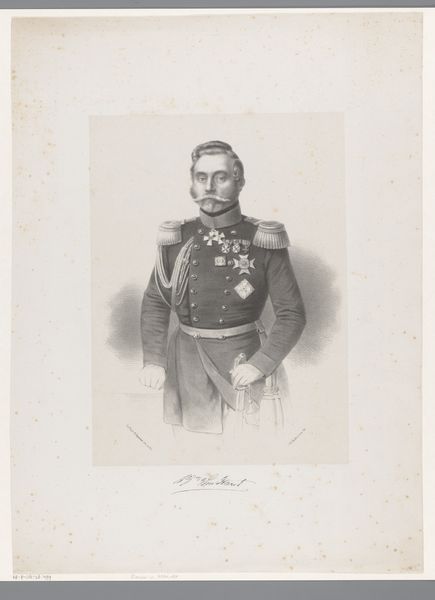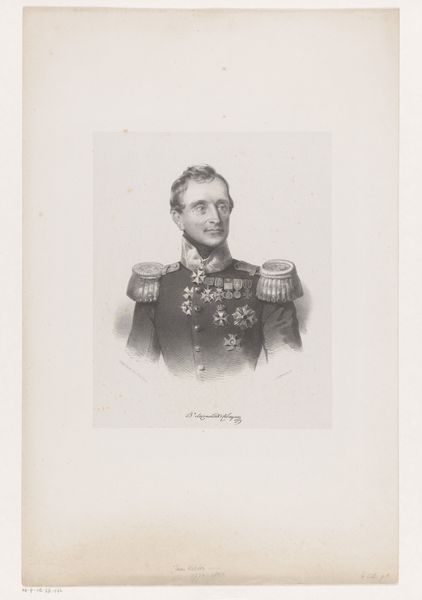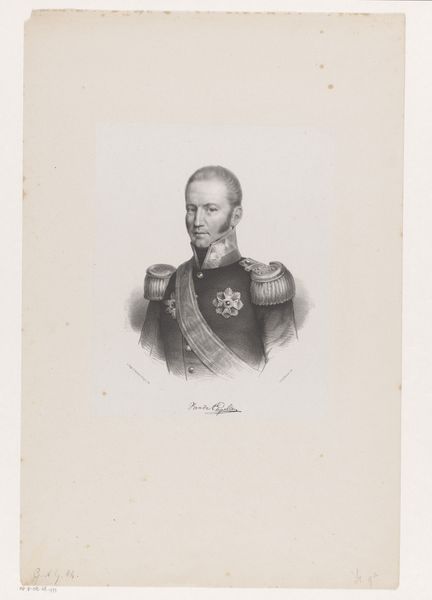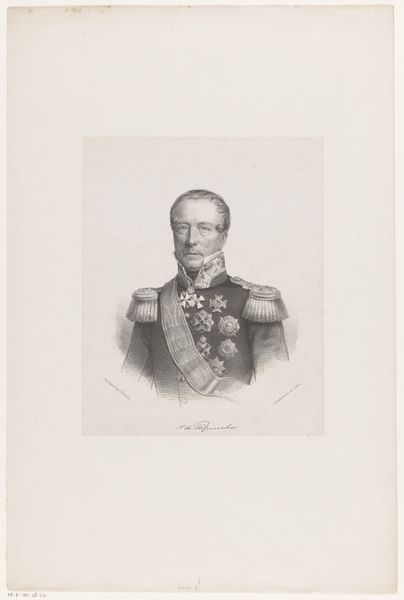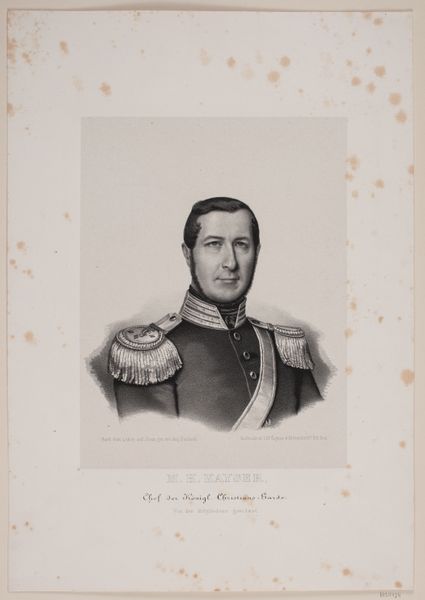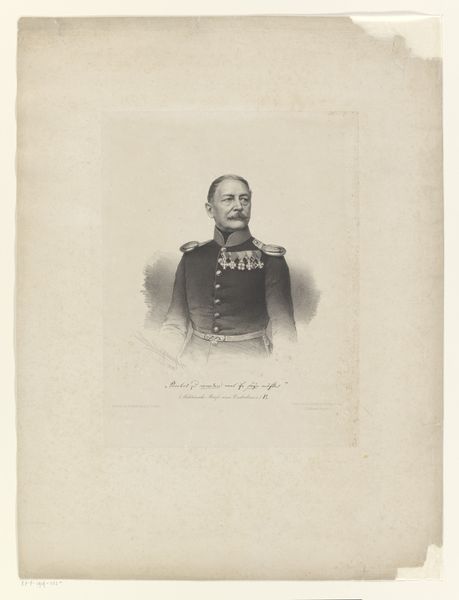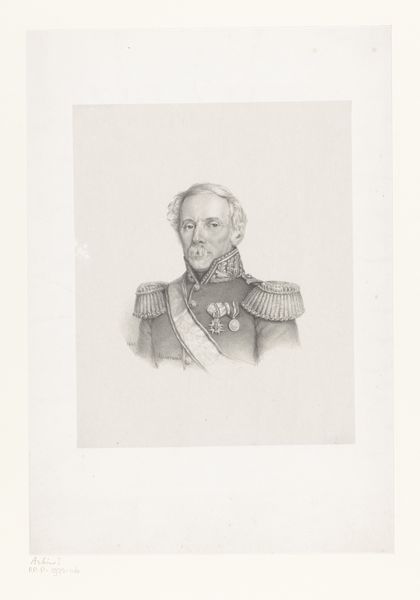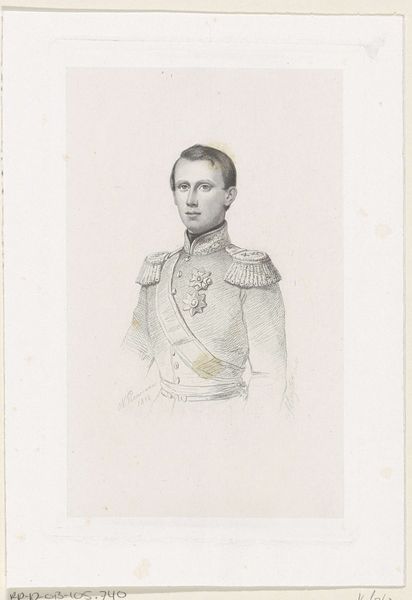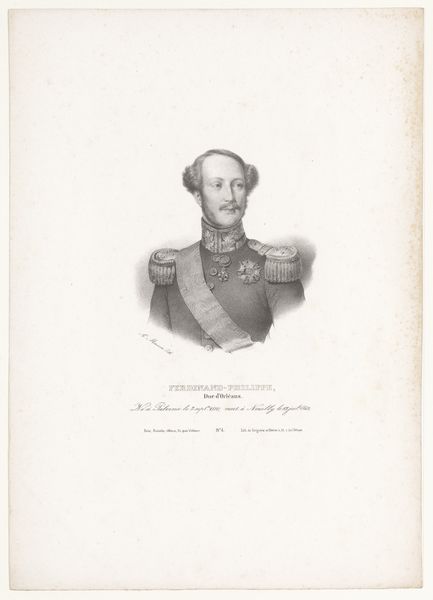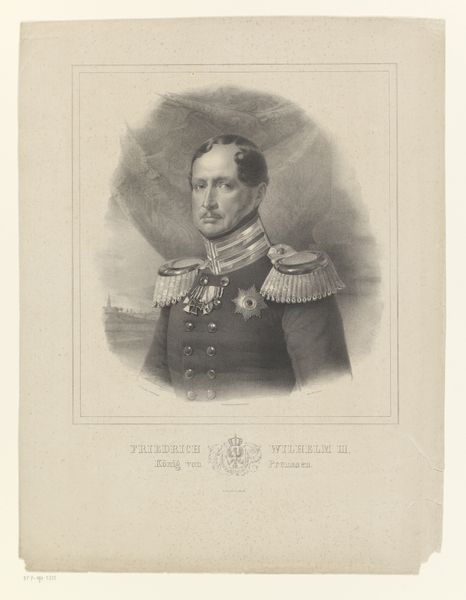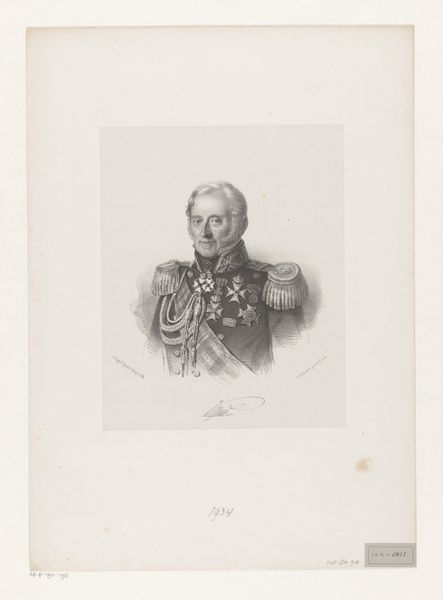
Portret van Dominique Jacques de Eerens 1831 - 1840
0:00
0:00
drawing, print, paper, graphite
#
portrait
#
drawing
# print
#
paper
#
romanticism
#
graphite
#
academic-art
Dimensions: height 557 mm, width 357 mm
Copyright: Rijks Museum: Open Domain
Curator: The precision of the graphite in this portrait, held here at the Rijksmuseum, immediately strikes me. It's a drawing or print dating from 1831 to 1840, titled "Portret van Dominique Jacques de Eerens," capturing the subject with remarkable clarity. Editor: Yes, the light and shadow render a very subdued yet self-assured mood, but its severe style also echoes an oppressive power dynamic from the period in question. Curator: Precisely, it represents a moment in Dutch history, the era of the Netherlands as a colonial power in Indonesia. De Eerens was, in fact, Governor-General during part of that era. Editor: From a formal perspective, observe how the artist uses line weight and density to give a sense of volume, and creates focal points to guide the viewer's attention to De Eerens's features. The textures are rendered so subtly too; the weave of the jacket contrasts beautifully with the reflective quality of the medals. Curator: And those medals tell a story. They represent service, loyalty, and quite possibly, actions that upheld a colonial system built on systemic injustice. The visual language of status here communicates much more than mere social standing; it signifies an engagement with deeply embedded power structures. Editor: Indeed. However, it’s worth recognizing the artistic skill. See how the subject's gaze pierces the plane—note how the light in his eyes creates a very vivid connection. Curator: That connection is chilling considering the context. Looking at portraits such as these should remind us of the complexities of the historical narratives they present. What were the actual consequences of his authority? The art encourages us to contend with legacies of domination and subjugation. Editor: Certainly, although an important facet of such artwork, the artistic process in rendering his person in such exquisite detail provides visual insight into the historical values assigned to portraiture at the time. Curator: Ultimately, this portrait becomes an object for reflecting on a period of social upheaval and invites interrogation. The purpose is not simply to view artistry but to challenge historical certainties. Editor: I agree. From contrasting textures to compositional elements, studying those attributes through careful observation enhances our cultural insight into both artwork and societal mores.
Comments
No comments
Be the first to comment and join the conversation on the ultimate creative platform.


